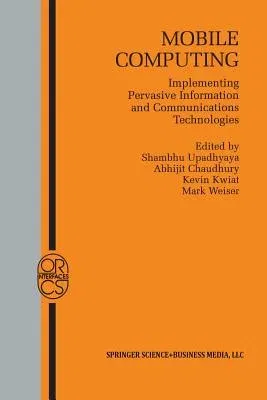Virtual enterprises and mobile computing are emerging as innovative
responses to the challenges of doing business in an increasingly mobile
and global marketplace. In this rapidly changing environment, it is
critical to focus on the fundamental technological aspects that enable
the concept of pervasive computing. Mobil Computing: Implementing
Pervasive Information and Communication Technologies is designed to
address some of the business and technical challenges of pervasive
computing that encompass current and emerging technology standards,
infrastructures and architectures, and innovative and high impact
applications of mobile technologies in virtual enterprises. The various
articles examine a host of issues including: the challenges and current
solutions in mobile connectivity and coordination; management
infrastructures; innovative architectures for fourth generation wireless
and Ad-hoc networks; error-free frequency assignments for wireless
communication; cost-effective wavelength assignments in optical
communication networks; data and transaction modeling in a mobile
environment, and bandwidth issues and data routing in mobile Ad-hoc
networks.
The book is organized around four categories of mobile and pervasive
computing and technologies: (1) business and management, (2)
architecture, (3) communication, and (4) computing. The first three
chapters focus on the business aspects of mobile computing and virtual
organization. The fourth chapter lays out an architecture for a fourth
generation wireless network. Chapters 5 and 6 are geared towards
communication technology, both wireless and wireline. Chapter 7 is a
taxonomy of data management environments in mobile computing and Chapter
8 is a review article on data and transaction management and research
directions in this area. Finally, Chapter 9 addresses various routing
strategies for the seamless switching between mobile hosts in an Ad-hoc
network. The primary audience for this book is industry practitioners,
university faculty, independent researchers and graduate students. The
articles have a mix of current and successful efforts, innovative ideas
on providing the infrastructure support, and open problems-both
conceptual and experimental. People in the academic as well as industry
can benefit from this book. All the articles have gone through a peer
review process. It is anticipated that the book will act as a single,
consolidated source of information on the cutting edge of pervasive
computing technologies.


